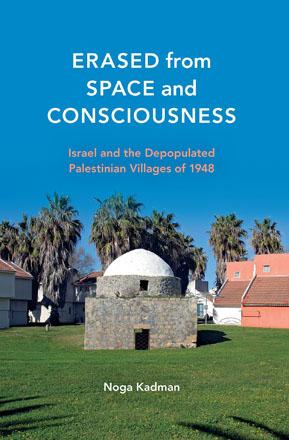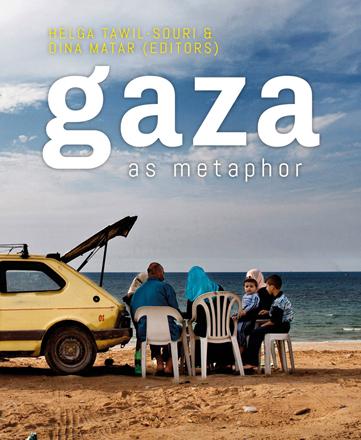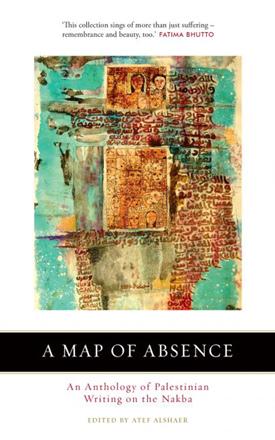You are here
‘Return is cheaper, just, peaceful and lasting’
By Sally Bland - Sep 18,2016 - Last updated at Sep 18,2016
Mapping My Return: A Palestinian Memoir
Salman Abu Sitta
Cairo/New York: The American University in Cairo Press, 2016
Pp. 332
Aside from his vast knowledge and engaging writing style, there are two features of Salman Abu Sitta’s identity that make his memoir unique and outstanding. One is his birthplace, Al Ma’in Abu Sitta, in the Beersheba District, not far from Khan Yunis. The other is the extent to which he harnessed his engineering skills to benefit the Palestinian national cause. Though he terms his memoir “the experiences of an ordinary Palestinian refugee”, the contents of “Mapping My Return” are extraordinary. (p. ix)
While most Palestinian memoirs — at least those available in English, are written by urbanites, Abu Sitta’s background is decidedly rural. His childhood memories bring to life southwest Palestine’s natural beauty, the social customs of bedouins-turned-farmers (his mother preferred the bayt al sha’ar to their stone house), and the bounty of his father’s estate which produced sufficient wheat to be sold to other areas. The Abu Sitta clan, in fact, made the desert bloom. It was the Zionist militias attacking Al Ma’in in 1948, when Salman was 10 years old, who laid waste to the orchards, cultivated fields, irrigation system and stone houses they had built.
Life was totally organised around the family’s connection to the land, which may partly explain Salman’s life-long pursuit of mapping the land and plotting the Palestinians’ return. A major influence on his life was his father, paramount sheikh of the Tarabin tribe, who was self-educated, and had the foresight to build the first school in Al Ma’in in 1920, presaging the Palestinians’ preoccupation with education after their dispossession.
Many of his brothers and cousins were involved in the 1936-39 revolt, then the resistance to the Zionist takeover in 1948. Especially since less has been written about South Palestine than about other parts of the country, Abu Sitta’s account is a valuable contribution to Palestinian political and social history.
During the 1948 Nakbeh, his parents and relatives took refuge in Khan Yunis, but due to his father’s determination that all his sons get a good education, Salman was sent to live with his brothers who were already studying at the university in Cairo.
Their flat became a gathering point where fellow Palestinians sought news of their families’ whereabouts, and some of the earliest organising took place, including the nucleus of the General Union of Palestinian Students. It was here that Salman met Yasir Arafat for the first time.
Although he was never a member of a specific organisation, he was involved in the national movement and the PLO all his life. His account gives an interesting picture of Palestinian politics during Nasser’s time, and the impact of the 1956 tripartite aggression on the Gaza Strip, including the terrible massacres at Khan Yunis, Rafah and Deir Balah.
Spending the summer of 1948 in Khan Yunis, Abu Sitta witnessed the plight of the masses of refugees crowded into the Gaza Strip, and experienced the first Israeli aerial bombings — the first time any of them had ever seen an airplane. He listened to the stories of survivors of under-reported massacres, such as the one at Burayr, which he would later document in his research.
The Nakbeh was the formative experience pushing him towards the independent scholarship that became his life’s mission. “Historians, writers, and storytellers speak of battle scenes, soldiers, and guns. Very few describe the landscape left behind when the soldiers have gone and the dead are buried.” (p. 95)
In this gap in the information available to the public, he carved out his research niche.
There is no space here to describe all of Abu Sitta’s accomplishments. His engineering career, after attaining a PhD in Britain, included teaching, research and building projects, and took him to the UK, Canada, Kuwait, Yemen and elsewhere.
What is amazing is that he also found time for his meticulous documentation, starting in British archives in the 1960s, when the Internet didn’t exist. Later, with the advance of technology, he compared new satellite photos with historical records to map the land and the changes wrought by Zionist occupation, eventually culminating in his “Atlas of Palestine 1917-1966” (2010) and Return Plan, proving that the Palestinians’ return to their original lands is feasible: “Our studies have shown that the rehabilitation and repatriation of the Palestinians will cost much less than the large sums paid by the United States to support Israel and the injustice in Palestine… Return is cheaper, just, peaceful, and lasting.” (p. 313)
Abu Sitta shares many fascinating anecdotes attesting to the accomplishments of other Palestinians, and mourns the loss of many others who could have contributed so much had they been allowed to live. At the same time, he mounts a scathing critique of those who are ready to barter away Palestinian rights in the name of “realism”. He places his hope in the young generation of Palestinians. “We do not need to consider only the external forces that could demolish racist Zionism. Let us look at the positive forces that may build justice. There lies my real and earnest hope.” (p. 316)
Related Articles
Erased from Space and Consciousness: Israel and the Depopulated Palestinian Villages of 1948Noga KadmanUS: Indiana University Press, 2015Pp.
Gaza as a MetaphorEdited by Helga Tawil-Souri & Dina MatarLondon: Hurst & Company, 2016Pp.
A Map of Absence: An Anthology of Palestinian Writing on the NakbaEdited by Atef AlShaerLondon: Saqi BooksPp.

















